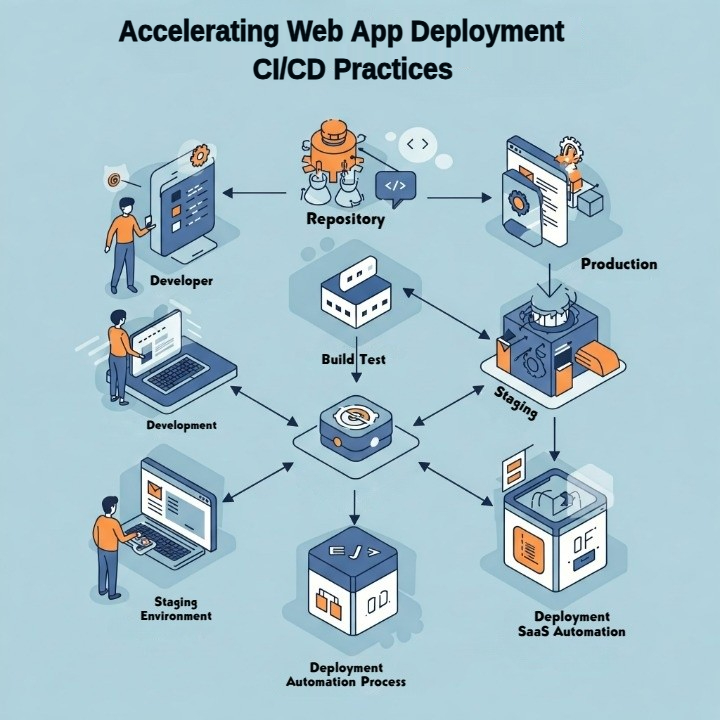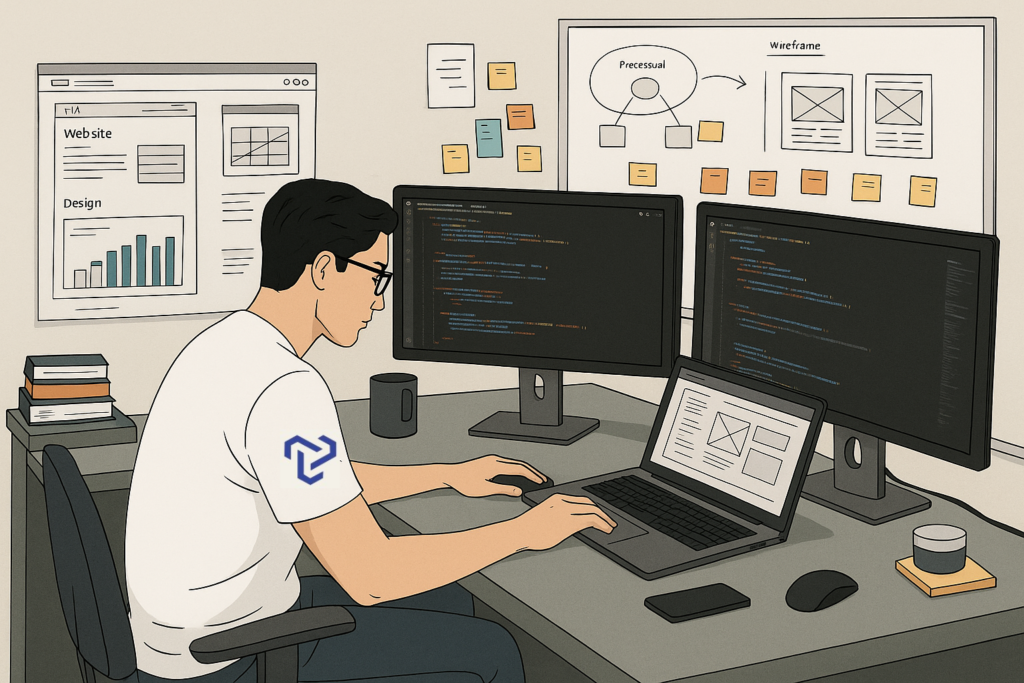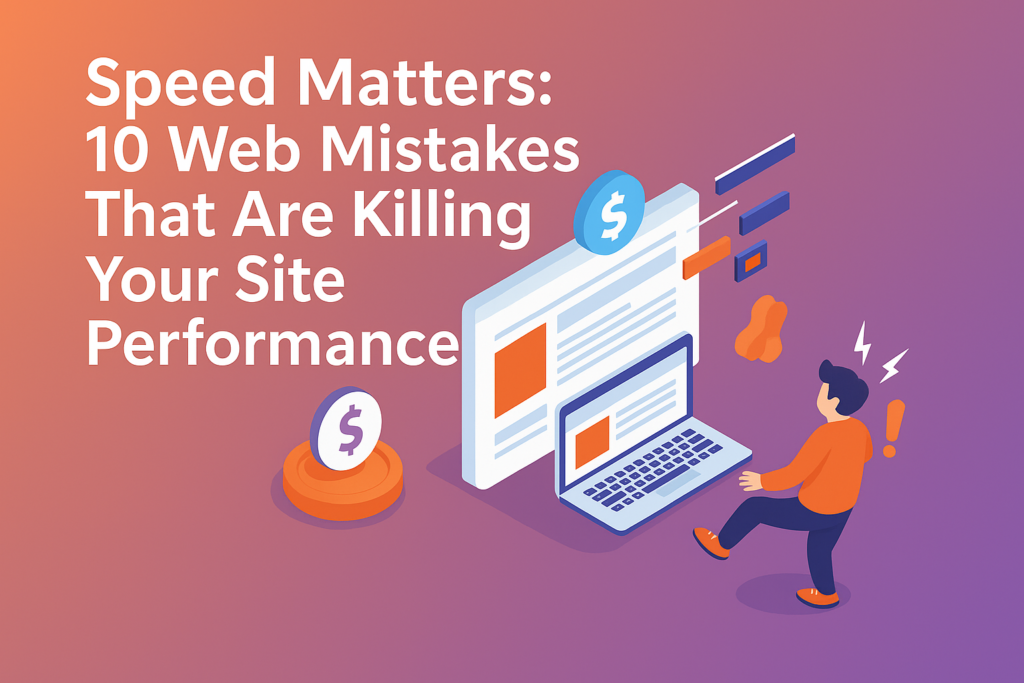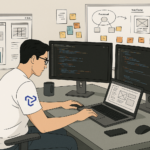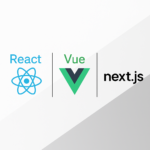As you step into 2025, it’s clear that AI and automation are not just trends, but transformative forces in the world of SaaS. From intelligent chatbots managing customer queries to automated data analytics predicting trends, these technologies are transforming how SaaS platforms operate. In the past, you may have faced challenges like slow, error-prone data processing, inconsistent customer service, and difficulty detecting security threats. But now, AI-powered solutions can streamline workflows, improve decision-making, and automate repetitive tasks, allowing you to focus on strategic roles. Are you ready to unlock greater agility, cost savings, and enhanced customer satisfaction? If you’re eager to explore how AI and automation can revolutionize your SaaS platform, this article will provide you with valuable insights.
What is SaaS?
Software as a Service (SaaS) is a cloud-based model where applications are hosted by a provider and made available to you over the Internet. Instead of installing software on your device or managing complex IT systems, you can access SaaS applications through a web browser. Since these applications run in the cloud, they reduce operational costs and eliminate the need for on-premises hardware. You can collaborate with your team in real time, improving productivity and communication. SaaS platforms are also integrating AI and automation to enhance your experience, improve decision-making, and boost overall operational efficiency.
Key Features of SaaS
Subscription-Based Model: SaaS operates on a subscription basis, where you pay a monthly or annual fee to access the software. This model reduces the upfront cost of purchasing software licenses and minimizes the financial burden of maintaining IT infrastructure.
Accessibility Anywhere: One of the biggest advantages of SaaS is its accessibility. You can access the software from any device with an internet connection, allowing for greater flexibility and remote work capabilities. Whether you’re in the office, at home, or travelling, you can continue using the software seamlessly.
Automatic Updates and Maintenance: SaaS providers manage all software updates and maintenance, ensuring that you always have access to the latest version of the application. This eliminates the need for manual updates and reduces the risk of running outdated or vulnerable software.
Scalability and Flexibility: SaaS solutions are highly scalable, allowing you to adjust your subscription as your business grows. You can easily add or remove users, upgrade features, or modify your plan without significant downtime or additional costs.
What is AI?
Artificial Intelligence (AI) is the ability of machines or computer systems to mimic human intelligence and perform tasks that usually require human thinking. These tasks include learning from data, recognizing patterns, solving problems, and making decisions. AI systems use algorithms to process large amounts of data, learn from it, and improve over time. They rely on techniques like machine learning, natural language processing, and computer vision to analyze and understand information. As AI technology becomes more advanced, it can help you streamline operations, enhance customer experiences, and create new growth opportunities in industries like healthcare, finance, transportation, and education.
Some real-world examples regarding AI & Automation in SaaS
Here are some real-world problems and their solutions, which show how the integration of AI and automation can help you start a new business in 2025. These platforms help businesses predict trends, automate workflows, and improve forecasting accuracy, making it easier for you to focus on strategic growth and drive success in your new venture.
1. Slow Customer Support Response Times
Challenge:
You may face challenges managing high volumes of customer queries manually, leading to delayed responses and inconsistent support. This can frustrate your customers and harm your business. By integrating AI-powered chatbots into your SaaS platform, you can automate responses, provide faster support, and focus on critical tasks, improving customer satisfaction and retention.
Solution:
Integrating AI-powered chatbots into your SaaS platform can significantly enhance your customer support. If you often struggle with handling high volumes of customer queries manually, chatbots can automate responses and provide instant support 24/7. These AI chatbots use Natural Language Processing (NLP) to understand and analyze customer inquiries, allowing them to provide accurate and relevant answers to common questions. Moreover, AI chatbots can learn from customer interactions and improve their responses over time. This means that the more you use them, the smarter and more efficient they become. Additionally, chatbots can handle multiple customer inquiries simultaneously, eliminating long wait times and ensuring that all your customers receive prompt assistance. By leveraging AI-powered chatbots, you can not only enhance your customer experience but also optimize your internal processes. This allows you to allocate your resources more effectively, focusing your team’s efforts on strategic tasks that drive business growth.
Examples of AI-powered chatbots in SaaS Platforms:
-
- 1. Zendesk: You can use Zendesk’s AI chatbot to provide instant customer support by resolving common queries and routing complex issues to human agents. It improves response time and ensures a seamless support experience for your customers.
-
- 2. Freshdesk: Freshdesk’s chatbot, powered by AI, helps you manage a high volume of customer interactions. It automates ticket creation, provides quick answers to frequently asked questions, and escalates complex queries when needed.
-
- 3. Intercom: It engages with your customers in real-time, offering personalized responses and guiding them through your SaaS platform. It boosts customer satisfaction by reducing wait times and providing relevant solutions.
-
- 4. HubSpot: HubSpot’s chatbot automates lead generation and customer support processes. It helps you qualify leads, answer customer questions, and schedule meetings without human intervention, saving time and improving conversion rates.
-
- 5. Salesforce Einstein Bot: Salesforce Einstein Bot assists with customer inquiries by analyzing data from your CRM. It personalizes responses based on customer history, helping you deliver a more tailored and efficient support experience.
2. Manual Data Analysis and Decision-Making
Challenge:
You might have trouble analyzing large amounts of data by yourself, which takes a lot of time and can lead to mistakes. This makes it hard for you to make quick and smart decisions. Without an automated system, spotting trends and useful information becomes difficult. As a result, you may end up making poor decisions that could hurt your business.
Solution:
By integrating AI and automation into your SaaS platform, you can significantly enhance your decision-making process. When dealing with large amounts of data, AI-powered systems can analyze information in real-time, identify patterns, and provide valuable insights. With Machine Learning (ML) algorithms, your SaaS platform can learn from historical data and make accurate predictions about future trends. Additionally, AI-powered data analytics tools can process vast amounts of data quickly, identifying hidden patterns that might not be easily detectable through manual analysis. This helps you uncover potential business opportunities and mitigate risks before they impact your operations.
Examples of AI and Automation in SaaS Enhancing Decision-Making:
-
- 1. Google Analytics 360: Google Analytics uses AI to analyze website traffic, identify user behaviour patterns, and predict customer actions. This allows you to make informed decisions about optimizing your website for better user engagement.
-
- 2. Zoho Analytics: Zoho Analytics automates data analysis by generating reports and dashboards that highlight key business insights. It helps you track performance and make informed decisions quickly.
-
- 3. Tableau with AI Integration: Tableau’s AI capabilities allow you to visualize data trends and uncover hidden insights. It empowers you to make better decisions by providing a clear understanding of business performance.
-
- 4. Microsoft Power BI: Microsoft Power BI uses AI to analyze large datasets and generate interactive reports. It helps you identify trends, forecast outcomes, and make data-driven decisions that improve your business performance.
-
- 5. AWS SageMaker: AWS SageMaker allows you to build, train, and deploy machine learning models that can analyze business data and predict future trends. This helps you make proactive decisions and optimize operations effectively.
3. Difficulty in Identifying Security Threats
Challenge:
You may find it difficult to detect security threats and unusual activities without advanced monitoring tools. Manual checks are slow and can miss hidden threats, putting your data at risk. Without automated systems, identifying suspicious activities becomes harder, increasing the chances of data breaches. This lack of proper security can lead to financial losses, damage your reputation, and reduce customer trust. Without AI and automation, keeping your system safe becomes a constant challenge.
Solution:
By using AI and automation in SaaS platforms, you can overcome these challenges and protect your system more effectively. AI-powered security systems continuously monitor your network and detect unusual activities in real time. These systems analyze patterns, identify suspicious behaviour, and trigger automated responses to prevent potential threats before they cause damage. For example, AI can quickly detect abnormal login attempts or unexpected file transfers and automatically block access, preventing unauthorized users from compromising your data. This eliminates the need for constant manual monitoring, allowing you to focus on other important tasks.
Examples of AI & Automation in SaaS for Identifying Security Threats:
-
- 1. CrowdStrike Falcon: CrowdStrike Falcon uses AI to detect malware and prevent cyberattacks in real-time. It continuously monitors your system and responds instantly to potential threats, protecting your data from breaches.
-
- 2. Darktrace: Darktrace uses AI to identify unusual activity across your network. If it detects any suspicious behaviour, it automatically takes action to prevent a security breach, ensuring your system remains safe.
-
- 3. Microsoft Azure Security Center: Azure Security Center leverages AI and automation to detect vulnerabilities, manage security policies, and respond to threats quickly. It helps you secure your cloud applications and prevent unauthorized access.
-
- 4. Sophos Intercept X: Sophos Intercept X uses AI to block ransomware and other advanced cyber threats. It automatically analyzes system behaviour and prevents malicious activities before they cause damage.
-
- 5. Fortinet FortiAI: Fortinet FortiAI detects and responds to security threats using machine learning. It continuously scans for suspicious activity and protects your system from evolving cyber threats.
4. Inefficient Workflow and Repetitive Tasks
Challenge:
You may spend too much time on repetitive tasks like data entry, report generation, and sending follow-up emails. These tasks are boring and reduce your productivity, leaving less time for important work that requires your creativity. Without automation, managing workflows becomes slow and inefficient, making it harder to meet deadlines. This can lead to errors, lower-quality work, and frustration as you try to keep up with multiple responsibilities.
Solution:
SaaS platforms equipped with AI and automation, you can simplify your work and save valuable time. These platforms can automatically handle repetitive tasks, ensuring that everything runs smoothly without constant supervision. For example, AI can automate data entry by extracting information from documents and inputting it into your system, reducing the risk of errors. Another advantage of automation is that it maintains consistency in your workflows. When tasks are automated, they follow a set process every time, minimizing mistakes and ensuring high-quality results. This allows you to focus on more meaningful tasks, such as strategizing, analyzing data, and making better decisions to grow your business.
Examples of AI & Automation in SaaS for Workflow Management:
-
- 1. Zapier: Zapier connects different applications and automates repetitive tasks. For example, when a new lead is added to your CRM, Zapier can automatically send a welcome email and update your task list, saving you time and effort.
-
- 2. HubSpot: HubSpot automates email follow-ups, lead nurturing, and marketing campaigns. It ensures that your communication with potential clients remains consistent and timely, helping you build strong customer relationships.
-
- 3. UiPath: UiPath automates data entry by extracting information from documents and inputting it into your system. This reduces manual errors and speeds up the process.
-
- 4. Trello with Butler: Trello’s Butler feature automates task assignments and project updates. When you move a task to a new column, Butler can automatically assign it to the right person and set a due date.
-
- 5. Grammarly: Grammarly uses AI to check and correct your writing in real-time. It ensures error-free content in emails, documents, and reports, saving you from time-consuming proofreading.
5. Poor Customer Retention and Lack of Personalization
Challenge:
If you don’t personalize the experience for your customers, they may lose interest and switch to your competitors. Without AI, it’s difficult to analyze customer behaviour and provide relevant suggestions. This lack of personalization can lead to poor customer satisfaction and reduced loyalty. When customers feel ignored or misunderstood, they are less likely to continue using your services. As a result, you miss opportunities to build strong relationships and grow your business effectively.
Solution:
AI and automation in SaaS platforms help solve customer retention issues by offering personalized experiences. AI-powered recommendation engines analyze customer behaviour, preferences, and purchase history to suggest relevant products or services. For example, if a customer frequently buys gadgets, AI can suggest the latest tech accessories. Automation also sends personalized promotions and follow-up emails. If a customer abandons their cart, automated reminders can bring them back to complete the purchase. AI analyzes feedback to identify patterns, helping you improve your offerings. By understanding your customers’ needs, you can enhance their experience, boost satisfaction, and increase loyalty, ensuring long-term business growth.
Examples of How AI and Automation in SaaS Improve Customer Retention:
-
- 1. Amazon: Amazon uses AI to analyze your purchase history and browsing behaviour. It suggests relevant products, such as phone cases if you recently bought a smartphone. These personalized recommendations keep you engaged and encourage repeat purchases.
-
- 2. Netflix: Netflix uses AI to recommend shows and movies based on your viewing history. If you enjoy action movies, Netflix suggests similar content, keeping you entertained and subscribed.
-
- 3. Shopify: Shopify uses automated email reminders to re-engage customers who abandon their carts. If you leave items in your cart, Shopify sends personalized follow-up emails, increasing the chances of completing the purchase.
-
- 4. Spotify: Spotify analyzes your music preferences and suggests personalized playlists, like “Discover Weekly,” making you stay longer and enjoy a tailored experience.
-
- 5. Sephora: Sephora uses AI-powered chatbots to offer beauty recommendations based on your previous purchases, improving customer satisfaction and boosting loyalty.
6. High Churn Rate Due to Poor User Engagement
Challenge:
When you use a SaaS platform, you expect it to be helpful and easy to use. But sometimes, users lose interest and stop using the service after a while. This is called a high churn rate, which means many users are leaving. If too many people stop using the platform, the company loses money and misses chances to grow. Without taking steps to keep users engaged, it becomes difficult for the platform to succeed. To fix this, SaaS companies need to understand why users leave and find ways to keep them interested and satisfied.
Solution:
To solve this problem, SaaS platforms now use AI-powered tools to keep you engaged. These tools analyze your behaviour, such as how often you log in, which features you use, and where you spend the most time. Based on this information, AI can predict when you might lose interest or stop using the platform. Once the system identifies that you might be at risk of leaving, it takes action to re-engage you. It might send you personalized emails with tips on using the platform better, offer customized discounts, or suggest features that match your interests. Sometimes, you may receive in-app notifications reminding you about useful tools or updates. These personalized strategies make the platform more relevant to your needs and keep you interested.
Examples of How AI & Automation in SaaS Improve Engagement in SaaS Platforms:
-
- 1. Mailchimp (Email Marketing Platform): Mailchimp uses AI to analyze your email campaign performance. If your engagement rate drops or users stop opening your emails, it suggests optimized subject lines, sends follow-up emails at ideal times, and provides insights to improve future campaigns. This keeps you engaged with the platform and improves your email marketing success.
-
- 2. Slack (Team Collaboration Tool): Slack monitors how often you and your team use the platform. If there’s a drop in activity, Slack sends reminders about missed messages, upcoming deadlines, or project updates. It also suggests integrating other tools to enhance your team’s collaboration and boost engagement.
-
- 3. Calendly (Scheduling Automation Software): Calendly tracks how frequently you schedule meetings and interact with the platform. If you become inactive, it sends helpful reminders or suggests using advanced scheduling features. Calendly also recommends automation options to save time and improve your scheduling efficiency.
-
- 4. Zendesk (Customer Support Software): Zendesk analyzes customer interactions and response times. If your support agents aren’t engaging with the platform as frequently, Zendesk recommends using automation to handle repetitive queries. It also sends performance reports to encourage better use of the platform’s features.
-
- 5. Notion (Project Management and Note-Taking App): Notion tracks how often you use its features like task lists, notes, and calendars. If you stop using it, Notion sends notifications highlighting new features or templates that could help you stay organized and productive.
7. Inaccurate Sales Forecasting
Challenge:
When you rely on manual sales forecasting, it’s easy to make mistakes. This can lead to inaccurate predictions about how much product you need to keep in stock, how many resources are required, and whether your sales targets are realistic. As a result, you might run out of stock or have too much, wasting money and resources.
Solution:
AI-powered sales forecasting, on the other hand, solves this issue. It uses machine learning algorithms to analyze past sales data, current market trends, and customer behaviour. With these accurate predictions, you can make data-driven decisions. For example, you’ll know exactly how much stock to keep and when to restock, so you avoid both overstocking and running out of products. This saves money, helps you better manage your resources, and ensures you meet customer demand. By using AI to forecast sales, you’re making smarter, more accurate decisions that will keep your business running smoothly and efficiently
Examples of How AI & Automation in SaaS Accurate Sales Forecasting:
-
- 1. HubSpot (CRM and Marketing Automation): HubSpot uses AI to predict your sales pipeline by analyzing past interactions, email responses, and lead behaviour. AI helps you identify which leads are likely to convert, allowing you to prioritize high-potential leads and optimize follow-ups, ensuring no lead is missed and forecasting future revenue more accurately.
-
- 2. Salesforce (CRM Software): Salesforce uses AI (Einstein AI) to forecast your sales performance by analyzing customer data, such as purchase history and social media activity. It predicts how likely deals are to close, helping you automate lead scoring and sales forecasting. This allows you to adjust strategies in real-time and optimize resources effectively.
-
- 3. Pipedrive (Sales CRM): Pipedrive uses AI to analyze your sales data, track activities, and predict outcomes. It automatically updates your pipeline, providing sales forecasts and highlighting which deals are likely to close. With automation, Pipedrive sends reminders, ensuring your sales efforts stay on track, optimizing productivity and improving sales accuracy.
-
- 4. Zoho CRM (Sales Automation Tool): Zoho CRM uses AI to analyze data from various touchpoints, predicting future sales opportunities based on past deals, customer behaviour, and marketing activity. Automation generates reports and sends timely follow-up emails, helping you keep deals moving through the pipeline. This helps you stay organized and make smarter, data-driven decisions.
-
- 5. Freshsales (Sales CRM Software): Freshsales uses AI and automation to forecast your sales by analyzing customer interactions, engagement, and buying patterns. It automatically segments leads based on their likelihood to convert and schedules follow-ups at optimal times. This allows you to focus on high-priority leads while Freshsales handles repetitive tasks, improving accuracy.
In conclusion, the future of AI and automation in SaaS platforms is exciting, as these technologies will continue to evolve and become more powerful. As AI systems get smarter, they’ll be able to handle even more complex tasks with better efficiency. SaaS platforms will become increasingly data-driven, allowing you to get faster, more accurate insights by analyzing larger datasets in real time. In the coming years, AI and automation will create a fully automated system that works seamlessly to manage most aspects of business operations. This will free you up to focus on strategic tasks like innovation and growth, while the platform takes care of everyday processes with minimal effort. The future will be one where businesses operate with greater efficiency, flexibility, and intelligence, all thanks to AI and automation. These technologies will help you stay ahead of the competition and streamline operations for long-term success.


